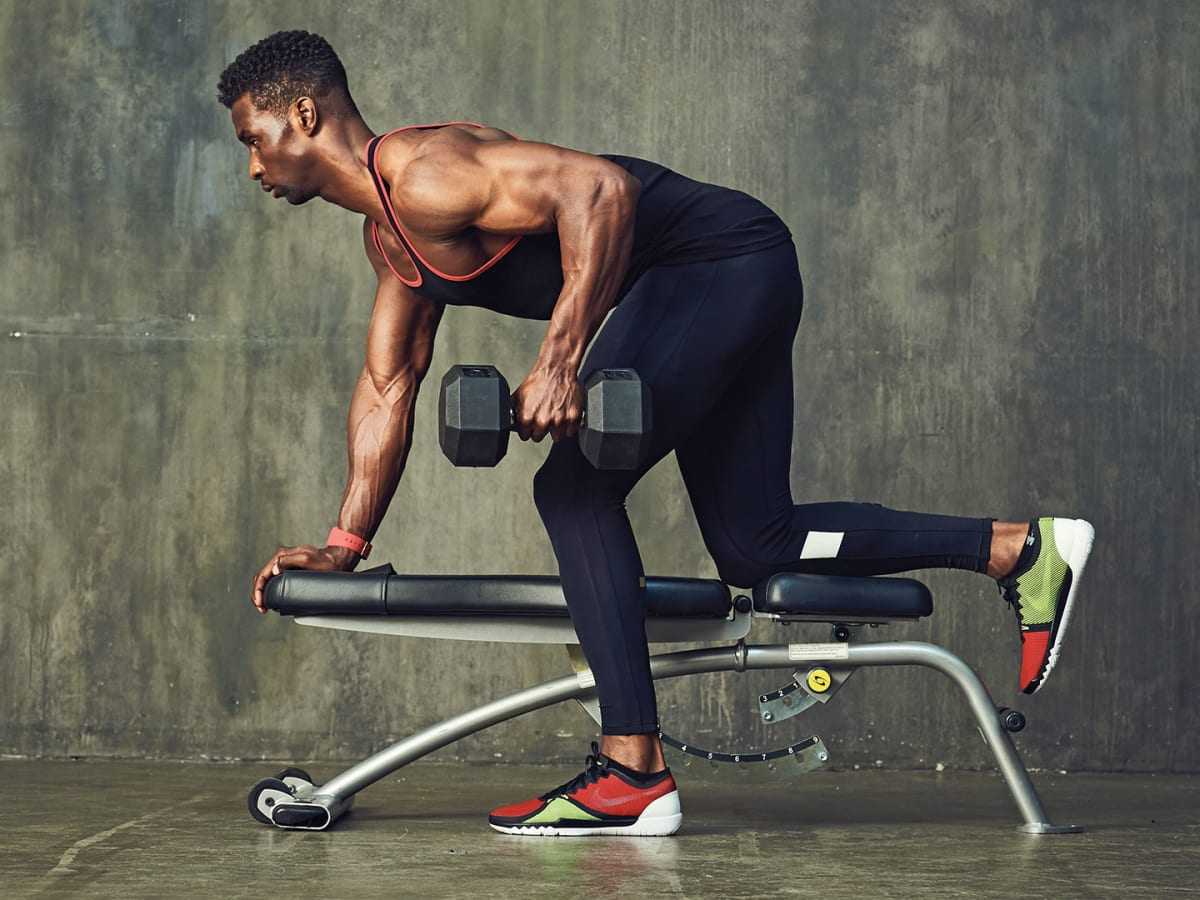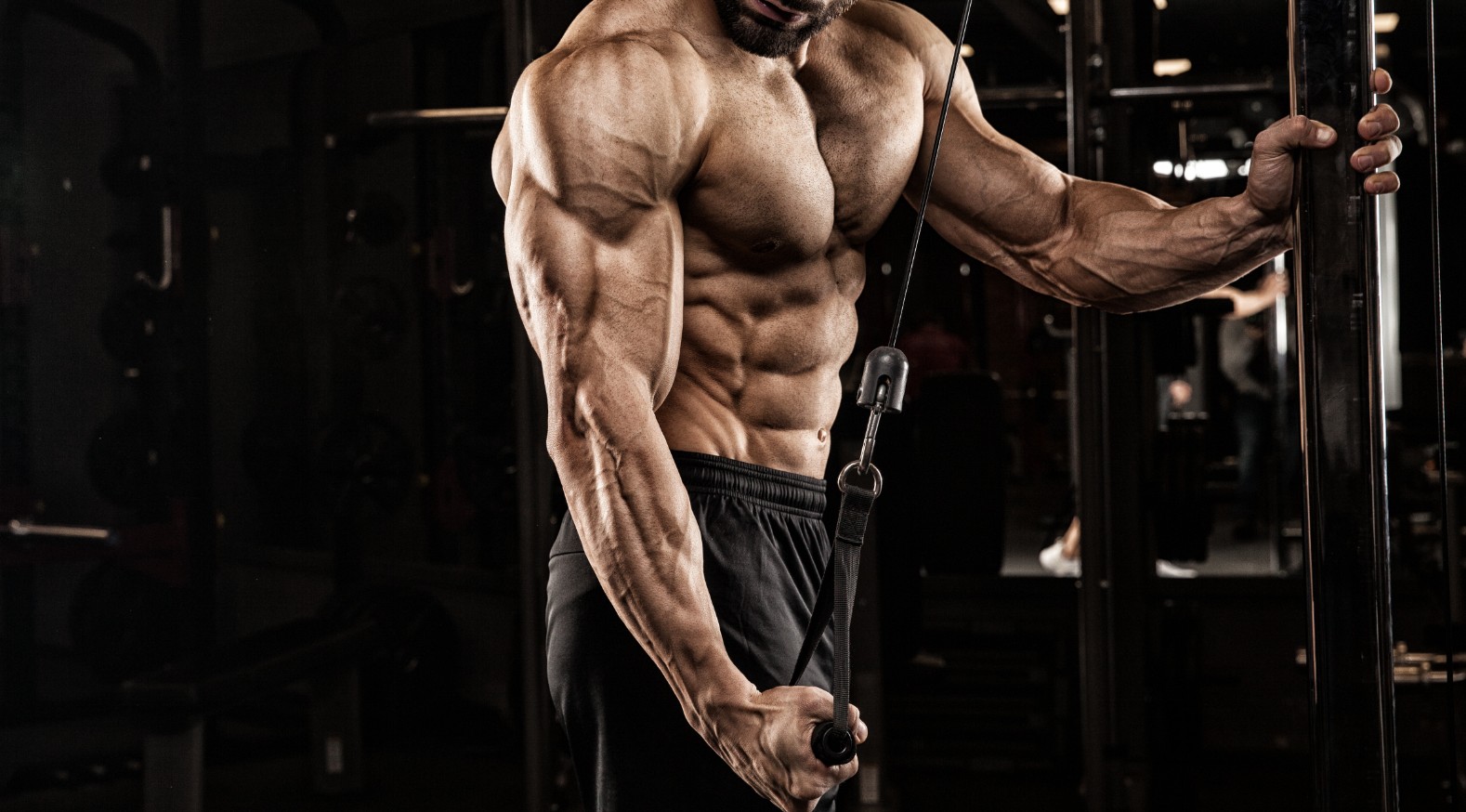The rear arm muscles are one of the main muscle bunches in the body, as they assist us with expanding our elbows and push things from us. They are likewise a significant supporter of our general arm size and definition. Yet, you needn't bother with an exercise center brimming with exceptional hardware to resolve them! All you really want for your rear arm muscles is a quality arrangement of free weights.
In this article, we will show you five viable hand weight practices for rear arm muscles that will assist you with developing fortitude, size, and definition in your arms. These activities should be possible at home or at the rec center, and they'll work for fledglings and high level lifters the same. All you really want is a couple of hand weights and a seat or a seat. We should begin!
Might you at any point focus on every one of the three rear arm muscle heads with just free weights?
The rear arm muscles are made out of three heads: the long head, the parallel head, and the average head. Each head has an alternate capability and beginning, however they all join to the elbow in a similar spot.
You want to focus on each of the three heads with various activities to benefit from your rear arm muscles exercise. Yet, imagine a scenario in which you just have hand weights available to you. Could you at any point actually work your rear arm muscles successfully with just hand weights? The response is yes. Free weights are flexible and versatile apparatuses that can challenge your rear arm muscles from various points and scopes of movement.
You can utilize them to perform segregation practices zeroing in on each head in turn or compound free weight practices including different joints and muscles. You can likewise involve free weights for different other muscle gatherings, similar to your shoulders or legs.
How frequently would it be advisable for you to focus on the rear arm muscles for strength advancement?
The recurrence of your rear arm muscles preparing relies upon a few variables, for example, your objectives, experience level, recuperation capacity, and in general preparation program. There is nobody size-fits-all response, however here are a few basic principles to follow:
On the off chance that you are a novice, you can prepare your rear arm muscles on more than one occasion per week as a component of a full-body or a chest area exercise. Center around learning each exercise's appropriate structure and procedure, and utilize light to direct loads. Hold back nothing three arrangements of eight to 15 reps for each activity, and rest for 60 to 90 seconds between sets.
In the event that you are a transitional or high level lifter, you can build the force and assortment of your rear arm muscles activities and utilize heavier loads and lower reps. Go for the gold four arrangements of six to 12 reps for each activity, and rest for 30 to 60 seconds between sets. A few specialists tracked down that rising the recurrence of exercises (in a similar muscle bunch) from two times each week to three or four made little difference, so there's very little justification for you to work your rear arm muscles on a more regular basis.
No matter what your exercise insight and abilities, you ought to continuously pay attention to your body and change your rear arm muscles preparing likewise. Assuming that you feel sore, tired, or harmed, you might have to diminish the recurrence, force, or volume of your rear arm muscles exercises. You ought to likewise offset your rear arm muscles preparing with your biceps and other muscle gatherings to keep away from muscle uneven characters and abuse wounds.
Viable Free Weight Rear Arm Muscle Workout

The above rear arm muscle expansion is one of the most outstanding hand weight exercises there is, period. It's a confinement practice that objectives the long top of the rear arm muscles, which is the biggest and most noticeable head. You can utilize two free weights or only one.
Instructions:
Hold a free weight in each hand and raise them over your head, with your arms completely expanded and your palms confronting one another. Keep your elbows near your ears and your shoulders down and back.
Gradually lower the hand weights behind your head, bowing your elbows to 90 degrees or marginally lower. Keep your upper arms still and your center tight. Stop briefly at the lower part of the development.
Crush your rear arm muscles and press the hand weights back to the beginning position, expanding your elbows completely. Try not to lock your elbows or flare them out. Rehash for the ideal number of reps.
Close grasp chest press
The nearby hold chest press is a compound activity that works the rear arm muscles, the chest, and the front deltoids. It is like the ordinary chest press however with a smaller grasp that moves the essential accentuation from the chest to the rear arm muscles. This exercise should be possible on a level, slope, or decline seat, contingent upon what part of the chest you need to target.
Guidelines:
Rests on a seat with your feet level on the floor and your back marginally curved. Hold a free weight in each hand and lift them over your chest, with your arms completely broadened and the hand weights squeezed together.
Gradually lower the hand weights to the sides of your chest, twisting your elbows and keeping them wrapped up. Stop when the hand weights are level with your chest or somewhat lower. Stop briefly at the lower part of the development.
Crush your rear arm muscles and chest and press the hand weights back up to the beginning position, broadening your arms completely. Try not to lock your elbows or skip the hand weights off your mind. Rehash for the ideal number of reps.
Rear arm muscle payoff
The rear arm muscle payoff is a seclusion practice that objectives the sidelong top of the rear arm muscles, which is the littlest and generally hard to disconnect head. It likewise works the back deltoids and the upper back. This exercise should be possible with a couple of hand weights, yet doing it with each arm in turn might be more straightforward.
Hold a free weight in each hand and stand with your feet shoulder-width separated and your knees somewhat bowed. Incline forward from your hips, however keep your back straight. Your middle ought to be practically lined up with the floor. Bring your elbows up to your sides, shaping a 90-degree point with your arms.
Keeping your upper arms still and your elbows near your sides, expand your arms behind you, lifting the free weights as high as possible. Press your rear arm muscles at the highest point of the development and hold briefly.
Gradually return to the beginning position, bowing your elbows and bringing down the hand weights. Try not to allow the free weights to contact your shoulders or swing them. Rehash for the ideal number of reps.
Weighted seat plunge
Seat plunges are one of the most mind-blowing rear arm muscle exercises, and utilizing a hand weight takes them to an unheard of level. For this activity, add a hand weight on your thighs for more opposition. You can utilize it is possible that a couple of seats, contingent upon your inclination and capacity.
Place a seat or seat behind you and another before you, around three to four feet separated. Sit on the edge of one seat with a hand weight in your lap. Put your hands on one or the other side of your hips. Your palms ought to overcome, and your fingers ought to be grasping the edge of the seat. Put your heels on the edge of the front seat with your toes facing up. Keep your knees marginally twisted and your back straight.
Get your hips off the edge of the seat and hold yourself up with your arms. Gradually twist your arms to bring down your body until your upper arms are lined up with the floor or somewhat lower. Keep your elbows near your sides and your shoulders down and back. Stop briefly at the lower part of the development.
Broaden your arms and propel yourself back to the beginning position. Try not to lock your elbows. Rehash for the ideal number of reps.
The Tate press focuses on the average top of the rear arm muscles, which is the most un-noticeable head. It additionally works the sidelong head and the chest. This exercise should be possible on a level, slope, or decline seat, contingent upon what part of the rear arm muscles you need to stress.:
Rests on a seat with your feet level on the floor and your back somewhat curved. Hold a free weight in each hand and press them over your chest, with your arms completely expanded and your palms confronting one another. Pivot your wrists internal so your palms are confronting your feet, and your thumbs are highlighting one another.
Gradually lower the free weights to the sides of your chest, twisting your elbows and keeping them wrapped up. The hand weights ought to move in a semi-round movement as though you are embracing a barrel. Stop when the hand weights are level with your chest or marginally lower. Stop briefly at the lower part of the development.
Crush your rear arm muscles and press the hand weights back to the beginning position, expanding your arms completely. Try not to lock your elbows or turn your wrists. Rehash for the ideal number of reps.
Should I do 2 or 3 tricep exercises?

Two rear arm muscles activities can be sufficient to assemble rear arm muscle, particularly assuming the activities target various region of the rear arm muscles. Notwithstanding, for ideal muscle development, it's frequently prescribed to incorporate various activities that target various pieces of the rear arm muscles, like the horizontal head, long head, and average head3
Should I do 3 or 4 sets for triceps?
On the off chance that strength is your objective, do 3 to 5 arrangements of 6 to 12 reps with moderate to significant burdens. To zero in on rear arm muscle power (which will help when you want to apply force in a brief timeframe — for instance, while shooting a b-ball), do 4 to 6 arrangements of 1 to 5 reps with somewhat significant burdens.
Are skull smashers enough for rear arm muscles?
Skull smashers work each of the three tops of the rear arm muscle and can be a useful device for developing fortitude and size in the arms. Working your rear arm muscles will assist with further developing pushing developments like the seat press, and can assist with developing above tossing fortitude.
